Correlation of Deactivation of Ni-Mo-W/Al2O3during Ultra-Low-Sulfur Diesel Production with Surface Carbon Species
2017-08-07GePanzhuZhangLeDingShiLiDadongNieHong
Ge Panzhu; Zhang Le; Ding Shi; Li Dadong; Nie Hong
(SINOPEC Research Institute of Petroleum Processing, Beijing 100083)
Correlation of Deactivation of Ni-Mo-W/Al2O3during Ultra-Low-Sulfur Diesel Production with Surface Carbon Species
Ge Panzhu; Zhang Le; Ding Shi; Li Dadong; Nie Hong
(SINOPEC Research Institute of Petroleum Processing, Beijing 100083)
The deactivation of a Ni-Mo-W/Al2O3catalyst during ultra-low-sulfur diesel production was investigated in a pilot plant. The reasons of catalyst deactivation were analyzed by the methods of elemental analysis, BET and TG-MS. The results showed that the catalyst deactivation rate was notable at the beginning of run, and then gradually reached a steady state after 448 h. In the initial period the catalyst deactivation may mainly be caused by the formation of the carbon deposits. The carbon deposits blocked the catalyst pores and the accessibility of active center decreased. The TG-MS analysis identified three types of carbon species deposited on the catalysts, viz.: the low temperature carbon deposit with high H/C atomic ratio, the medium temperature carbon deposit, and the high temperature carbon with low H/C atomic ratio. The amount of high temperature carbon deposits on the catalyst determined the overall activity and, therefore the high temperature carbon was a major contributor to the deactivation of Ni-Mo-W catalyst.
ultra-low-sulfur diesel; carbon deposit; catalyst deactivation; catalyst species
1 Introduction
The production of ultra-low-sulfur diesel has become an important business in recent years due to the increasingly stringent environmental regulations that require low levels of sulfur compounds in the fuel[1-2]. At present most studies are mainly focused on the development of highly active catalysts. However, the problem of catalyst deactivation is particularly important due to more harsh operating conditions for the production of ultra-low-sulfur diesel.
The reasons of catalyst deactivation include catalyst poisoning, the deposition of metals, the formation of carbon deposits, and the change of active phase structure. Among various factors of catalyst deactivation, carbon deposits may be a very critical factor[3-5]. The carbon deposits existing on catalysts cover several species. However, at present there are still no uniformly accepted understandings about which species of carbon deposition is the major reason of catalyst deactivation. Some researchers have found that the catalyst deactivation has a well relationship with the species of carbon deposit[6-7], but some researchers still failed to fnd the relationship between them because of the complexity of the operating conditions[8].
Therefore, in this study, we attempted to investigate the catalyst deactivation mechanism, and analyze the relationship between catalyst deactivation and carbon deposit species based on the characterization of deposited coke by elemental analysis and TG-MS technology. The results can provide useful technical guidance information for the development of highly stable catalysts.
2 Experimental
2.1 Feedstock and catalysts
The raw material contained 80% of straight-run diesel fraction and 20% of FCC light cycle oil. The properties of raw material are shown in Table 1.
A commercial Ni-Mo-W/Al2O3catalyst was used for the production of ultra-low-sulfur diesel (ULSD). The physical properties of catalysts are shown in Table 2.

Table 1 Properties of raw material
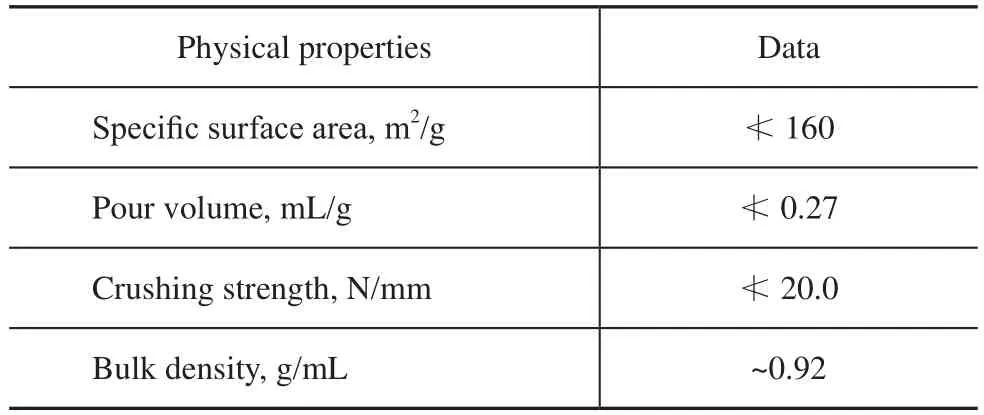
Table 2 Physical properties of Ni-Mo-W/Al2O3catalyst
2.2 Experiment condition
This experiment was conducted in a medium fixed-bed hydrogenation reactor. Prior to being used in the reaction, the catalyst was subjected to presulfurization in the presence of a straight-run gas oil containing 2% of CS2, operating at a specified temperature, a hydrogen partial pressure of 6.4 MPa, a LHSV of 1.5 h-1and a H2/oil volume ratio of 300. And then the presulfurized catalyst was passivated with light diesel for 48 h to prevent an excessively high initial activity under the conditions covering a temperature of 320oC, a hydrogen partial pressure of 6.4 MPa, a LHSV of 1.5 h-1, and a H2/oil volume ratio of 300.
After passivation, the raw material began to enter the reactor at a hydrogen partial pressure 6.4 MPa, a LHSV of 2.0 h-1and a H2/oil volume ratio of 300. The temperature was adjusted continuously according to the target of ULSD. Catalysts of different operating time including 48 h, 248 h, 448 h, and 1048 h, respectively, were selected as the research object. In this paper, the beginning of passivation was regarded as the start of run (SOR).
2.3 Characterization of catalysts
Before characterization, the catalysts were washed with toluene in a Soxhlet unit to remove adsorbed oil in the catalyst surface and pores, and were then dried for 4 h at 80oC[9-10]. The amount of coke deposited on the deactivated catalysts was measured by an EMIA-320-V carbon and sulfur analyzer. The pore structure of catalyst was measured by an AUTOSORB-6B surface area and pore size analyzer. The properties of coke were characterized by NETZSCH STA 409PC-QMS403C thermal analyzer and mass spectrometer operating at an air fow rate of 100 mL/ min. A linear heating rate of 10oC/min between 30oC and 800oC was used throughout the test.
3 Results and Discussion
3.1 Deactivation rate of catalysts
During the experiment, the reaction temperature was constantly improved to produce ultra-low-sulfur diesel. Figure 1 shows the change of reaction temperature with the running time within 48—1048 h.

Figure 1 Reaction temperature changing with run time
It can be seen from Figure 1 that the reaction temperature increased with the operating time in order to produce the on-spec ultra-low-sulfur diesel. Besides, the catalyst deactivation was drastic in the initial period of operation and then gradually entered a stable deactivation stage.
3.2 Elemental analysis
Table 3 shows the amount of C, S and N elements contained in the catalyst of this study.
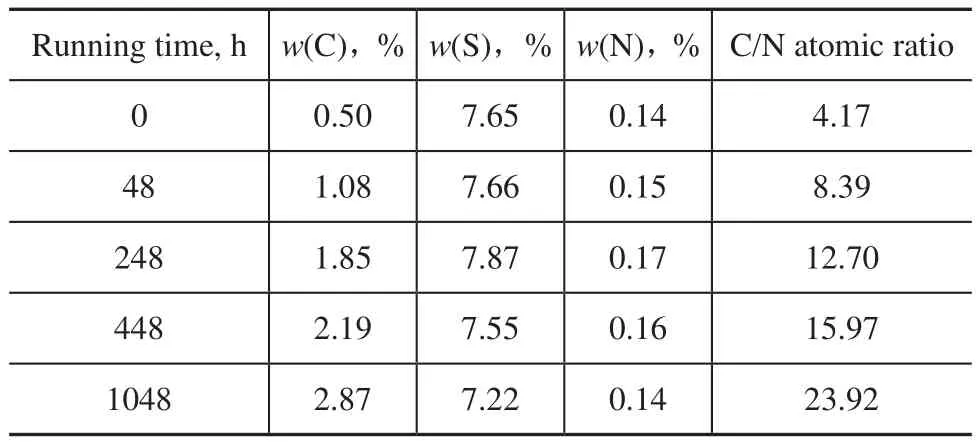
Table 3 Amount of individual elements contained in the catalyst
As shown in Table 3, the carbon content had already reached 1.08% after the unit had operated for 48 h. Furthermore, the amount of carbon deposit showed an increasing trend with the increase of running time. Especially at the beginning of running, the carbon deposit rate was more obvious. However, the change of sulfur content in the catalyst was not obvious during the running time,although the sulfur content showed an increasing trend during the operating duration between 48 to 248 h. This may happen due to the fact that H2S produced by the hydrogenation of sulfur from the raw material promotes catalyst sulfuration.
However, the C/N atomic ratio increased gradually with the increase of operating time. The reason may be ascribed to the possibility that carbon deposit formed by polycyclic aromatic hydrocarbons become greater with the increase of running time[11]. In the initial period, the C/N atomic ratio is the lowest. This may be due to that the adsorption of nitrides on catalyst surface in the early stage of reaction promotes the formation of the carbon deposit on catalyst. Furimsky[10,12]and Mochida, et al.[13]found that organic nitrogen compounds of raw material were easier to promote the formation of carbon deposit on the catalyst surface. They explained that organic nitrogen compounds were more likely to be adsorbed on acid sites of the catalyst, but were not readily to be desorbed from the catalyst acid sites and were subsequently converted to carbon deposits. In order to determine which carbon species was the main precursor leading to the catalyst deactivation, the properties of carbon species deposited on the catalysts were further investigated as described below.
3.3 BET analysis
The carbon deposit on catalyst surface may block the pore structure of the catalyst. The diffusion of the reactants is hindered and the rate of reaction decreases. Therefore, in this paper, the catalyst surface, the pore volume and the average pore diameter were investigated. The results are shown in Table 4. The catalyst pore diameter distribution curves are shown in Figure 2.

Table 4 BET analysis of different running time catalysts
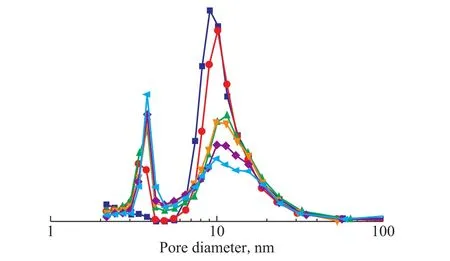
Figure 2 Catalyst pore diameter distribution curves
According to Table 4 and Figure 2, the catalyst surface and pore volume obviously decreased with an increasing running time. The possible reason was that a certain amount of coke deposited on the inner and outer surface of catalyst and blocked the catalyst pores. The catalyst surface and pore volume declined. As a result, the diffusion of larger molecules was limited and the reaction on the active centers of catalyst inner surface was hampered. The active centers of the catalyst inner surface could not be fully used. Therefore, the decline of active center accessibility may be an important reason for thecatalyst deactivation[14]. It can be seen from Figure 2 that the ratio of micropores between 3 nm and 5 nm gradually increased with the increase of running time. This part of micropores may be formed by the accumulation of carbon deposit or particles[15].
3.4 TG-MS analysis
Thermogravimetry-mass spectrometry (TG-MS) technology not only can reflect the degree of difficulty of coke combustion by TG curve, but also can qualitatively and quantitatively analyze the gas composition determined by mass spectrometer[16]. The technology is important for understanding the catalyst deactivation reason in depth. The TG curves and derivative thermogravimetric analysis (DTG) of catalysts in different running time are shown in Figure 3.
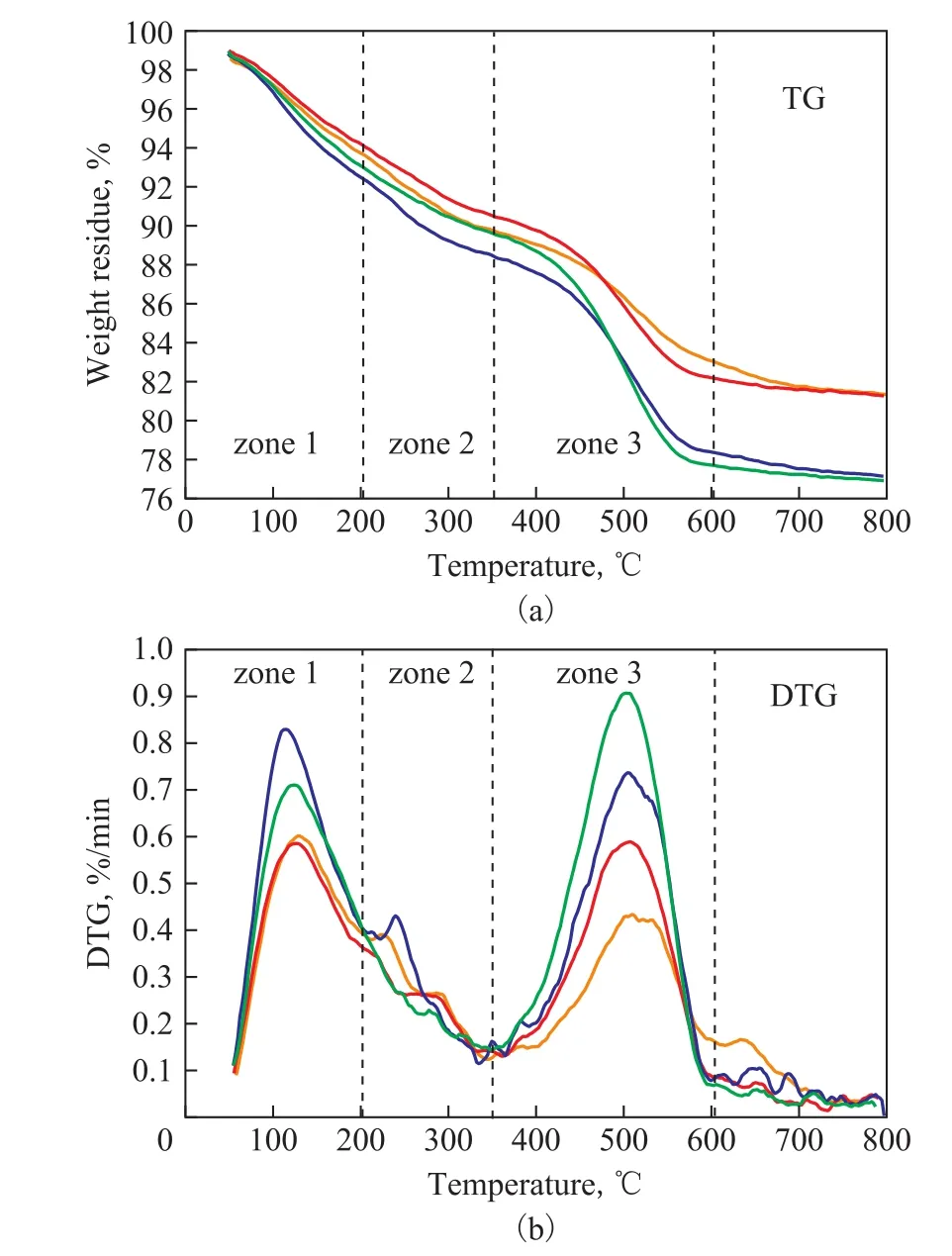
Figure 3 TG and DTG curves for the catalysts having subjected to reaction over different running time
As shown in Figure 3, the curves of TG and DTG have three obvious zones[17]. The first zone, which covered a temperature range from SOR to 200oC, was mainly caused by the volatilization of a small amount of water and a relatively low molecular weight residue on the catalyst surface, while the second zone covered a temperature range between 200oC and 350oC, and the third area covered a temperature range between 350oC and 600oC. The second and the third zones could be formed via the thermochemical reaction of different carbon species. The carbon deposit of second zone might be amorphous carbon. The carbon deposit of the third zone might be carbon compounds with higher condensation degree.
By taking the catalyst after having operated for 48 h as an example, the mass spectra of H2O, CO2, SO2and NO2were analyzed. The TG-MS spectra of catalysts after having operated for 48 h are shown in Figure 4.

Figure 4 Mass spectra of catalysts after having operated for 48 h
To accurately determine the peak position of the four mass spectra, the method of fitting peak process was adopted to deal with different mass spectra, as shown in Figure 5.
In Figure 5, the mass spectra of H2O show four characteristic peaks at 130oC, 245oC, 365oC, and 500oC, respectively. The spectral peak at 130oC is mainly caused by the volatilization of a small amount of water and the relatively low molecular weight residue on the catalyst surface. Compared with the spectral peak position of CO2, SO2and NO2in the range of 260oC ~280oC, the spectral peak intensity of SO2is high, while the spectral peak intensity of CO2and NO2is weak. Therefore, the spectral peak of H2O at 245oC may be formed by chemical adsorption of combined water or the decomposition of carbon deposit on the catalyst[18]. In the range of 350oC-600oC, according to the spectral peak intensity of H2O, CO2, SO2and NO2, the two spectral peaks of H2O at 365oC and 500oC are mainly caused by the combustion of refractory carbon deposit and sulfde[19].
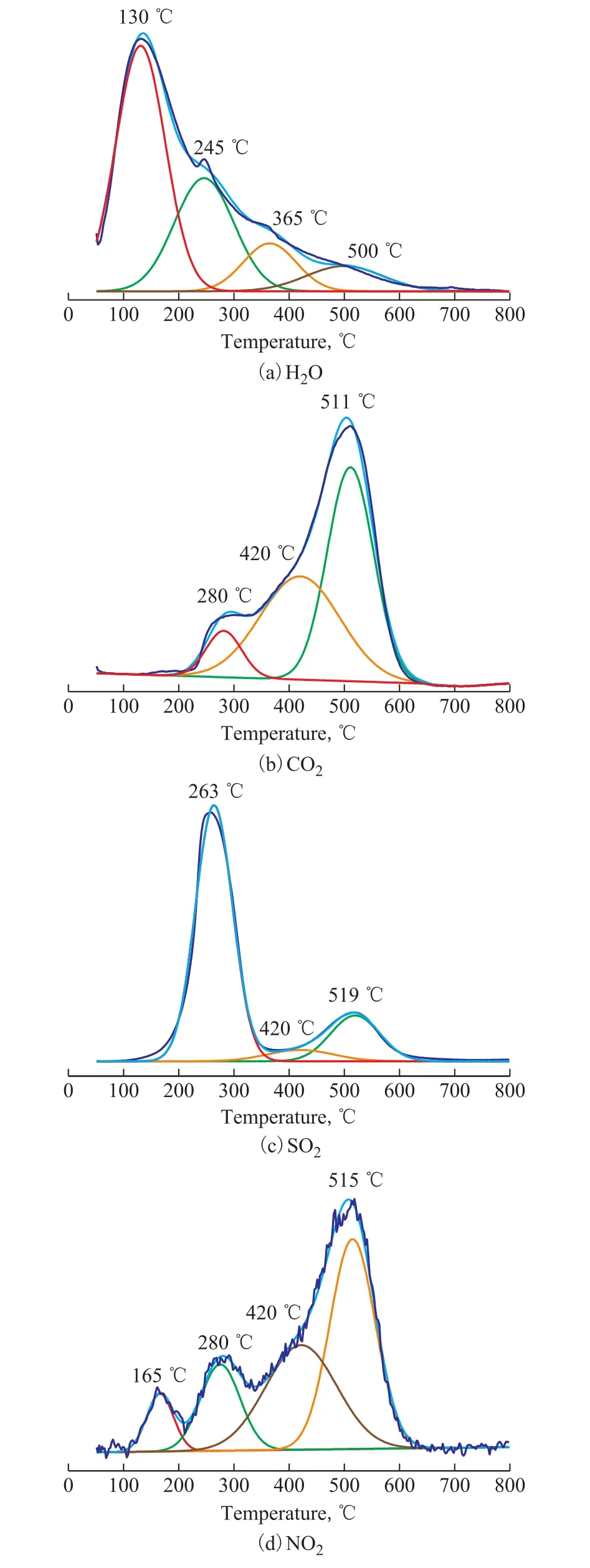
Figure 5 Mass spectra fitting curve of catalysts after having operated for 48 h
According to Figure 5, the mass spectra of CO2show three characteristic peaks at 280oC, 420oC, and 511oC, respectively. The spectral peak of CO2at 280oC is close to the spectral peak of SO2at 263oC, and the peak can generally be considered as the carbon deposit related to the active phase. The intensity of two CO2peaks at 420oC and 511oC is strong, but the spectral peak intensity of H2O is weaker in this temperature range, which indicates that the H/C atomic ratio of the carbon deposit is lower. Furthermore, the obvious heat emission was identified in the temperature range from 350oC to 600oC on the TG curves. Through analysis, this part of carbon deposit might be the high temperature type carbon deposit with higher condensed degree[20-21].
According to SO2spectral peak graph in Figure 5, there are two strong spectral peaks at 263oC and 519oC,respectively, and a weak spectral peak at 420oC. The spectral peak of SO2at 263oC might be formed by the oxidation of the WS2- and MoS2- like sulfides. The spectral peak of SO2at 420oC may be formed by the oxidation of unreacted sulfdes that were covered with W oxides and W sulfates. The spectral peak of SO2at 519oC might originate mainly from the oxidation of organic sulfur in the carbonaceous deposits[19,22].
According to the spectral peak profles of NO2in Figure 5, there are four obvious spectral peaks of NO2at around 165oC, 280oC, 420oC, and 515oC. The spectral peaks of NO2at 160oC might be formed via decomposition of nitride on the catalyst surface. The position of three spectral peaks of NO2at 280oC, 420oC and 515oC is consistent with the spectral peak position of CO2, indicating that the adsorption of nitrogen compounds on catalyst has a direct relationship with the formation of carbon deposit on the catalyst[10,12-13]. In order to further compare the spectral peak of CO2of the catalyst having operated over different running time, other catalysts were also investigated with the method of ftting peak process, as shown in Table 5.
Upon combining the data on carbon deposits in Section 2.2,the carbon contents of different carbon species were calculated, as shown in Figure 6.

Table 5 CO2peaks position and proportion of catalysts after having operated over different time

Figure 6 Change of carbon species and reaction temperature with the running time
Figure 6 shows that the change of type 1 carbon deposit associated with active phase is not obvious with the further increase of running time. This might occur because the active hydrogen species around the active center could eliminate the precursor formation of carbon deposit to avoid further formation of carbon deposits. However, the amounts of type 2 and type 3 carbon deposits show an obvious increasing trend with the increase of running time, especially the high temperature carbon deposits of type 3. In order to produce ultra-low-sulfur diesel, the catalyst deactivation is inevitable and we have tried to increase the reaction temperature. Besides, we can fnd that the increase of reaction temperature has a good relationship with the increase of high temperature carbon deposits of type 3, which strongly suggests that the extent of catalyst deactivation is determined largely by the amount of type 3 carbon deposits rather than the total amount of carbon deposits on catalysts. The reason might be that the high temperature carbon deposits of type 3 with high condensation degree can more easily cover catalyst activity center and block the catalyst pores, eventually leading to the decline of catalyst activity[23].
4 Conclusions
Based on the above experimental results and discussion, the following conclusions can be drawn.
1) The catalyst deactivation rate was obvious in the initial period of operation (48-448 h), and then gradually reached a steady state (after 448 h).
2) The catalyst deactivation in the initial period may mainly be ascribed to the formation of the carbon deposits that could block the catalyst pores coupled with the decline of active center accessibility.
3) According to the difficulty degree of coke burning, the carbon deposits on the deactivated catalyst can be divided into three categories and the extent of catalyst deactivation was largely determined by the amount of the high temperature carbon deposits.
Acknowledgement: This work was financially supported by the Hydrogenation Process and Hydrogenation Catalyst Laboratory (RIPP, SINOPEC). All of the staffs in our laboratory had provided a lot of support in the analysis of oil samples and catalyst characterization.
[1] Landau M V. Deep hydrotreating of middle distillates from crude and shale oils[J]. Catalysis Today, 1997, 36(4): 393-429
[2] Torrisi S, Dicamillo D, Street R, et al. Proven best practices for ULSD production[C]//NPRA Annual Meeting, San Antonio, TX, 2002
[3] Furimsky E, Massoth F E. Deactivation of hydroprocessingcatalysts[J]. Catalysis Today. 1999, 52(4): 381-495
[4] Wiwel P, Zeuthen P, Jacobsen A C. Initial coking and deactivation of hydrotreating catalysts by real feeds[J]. Studies in Surface Science and Catalysis, 1991, 68: 257-264
[5] Kai D, Xiaodong G, Hao W. Studies on the deactivation model of hydrotreating catalyst for ultra-low-sulfur-diesel production [D]. Beijing: Research Institute of Petroleum Processing, 2009
[6] Song S, Ihm S. Deactivation control through accelerated precoking for the CoMo/γ-Al2O3catalysts in thiophene hydrodesulfurization[J]. Korean Journal of Chemical Engineering, 2003, 20(2): 284-287
[7] Koh J H, Lee J J, Kim H, et al. Correlation of the deactivation of CoMo/Al2O3in hydrodesulfurization with surface carbon species[J]. Applied Catalysis B: Environmental. 2009, 86: 176-181
[8] Song S, Ihm S. Characterization of Ni-W/Al2O3-SiO2aromatics saturation catalysts used in a one-year commercial HDS run[J]. Catalysis Today. 1996, 29: 267-271
[9] Furimsky E. Determination of coke on catalyst surface[J]. Industrial & Engineering Chemistry Product Research and Development. 1979, 18(3): 206-207
[10] Furimsky E. Chemical origin of coke deposited on catalyst surface[J]. Industrial & Engineering Chemistry Product Research and Development. 1978, 17(4): 329-331
[11] Vichailak M, Sweers M. Impact of vaporization on catalyst deactivation: Part II-high pressure ULSD production[C] //NPRA Annual Meeting, San Antonio, Texas: 2010
[12] Furimsky E. Deactivation of molybdate catalysts by nitrogen bases[J]. Erdöl & Kohle Erdgas Petrochemie. 1982, 35(10): 455-459
[13] Mochida I, Inoue S, Maeda K, et al. Carbonization of aromatic hydrocarbons—VI: Carbonization of heterocyclic compounds catalyzed by aluminum chloride[J]. Carbon, 1977, 15(1): 9-16
[14] Chen Shifeng, Hai Chen, Yang Chaohe. Characterization of coked catalysts for residual hydroconversion process[J]. Acta Petrolei Sinica (Petroleum Processing Section), 2002, 18(3): 8-13 (in Chinese)
[15] Zhang Xuan. Study on the effect of chelating agent on the performance of residue hydrotreating catalyst [D]. Beijing: Research Institute of Petroleum Processing, 2016
[16] Castaño P, Gutiérrez A, Hita I, et al. Deactivating species deposited on Pt-Pd catalysts in the hydrocracking of lightcycle oil[J]. Energy & Fuels. 2012, 26(3): 1509-1519
[17] Sahoo S K, Ray S S, Singh I D. Structural characterization of coke on spent hydroprocessing catalysts used for processing of vacuum gas oils[J]. Applied Catalysis A: General. 2004, 278(1): 83-91
[18] Lin Jianfei. Exploration research of in-situ removal and transformation of coke on residue hydrogenating catalysts surface [D]. Beijing: Research Institute of Petroleum Processing, 2016
[19] Yoshimura Y, Sato T, Shimada H, et al. Oxidative regeneration of spent molybdate and tungstate hydrotreating catalysts[J]. Energy & Fuels, 1994, 8(2): 435-445
[20] Hauser A, Stanislaus A, Maraf A, et al. Initial coke deposition on hydrotreating catalysts. Part II. Structure elucidation of initial coke on hydrodematallation catalysts[J]. Fuel, 2005, 84: 259-269
[21] Callejas M A, Inez M T M, Blasco T, et al. Coke characterisation in aged residue hydrotreating catalysts by solid-state13C-NMR spectroscopy and temperatureprogrammed oxidation[J]. Applied Catalysis A: General. 2001, 218: 181-188
[22] Yoshimura Y, Sato T, Shimada H, et al. Influences of oxygen-containing substances on deactivation of sulfded molybdate catalysts[J]. Applied Catalysis. 1991, 73(1): 55-63
[23] Van Doorn J, Moulijn J A, Djega-Mariadassou G. Highresolution electron microscopy of spent Ni-Mo/Al2O3hydrotreating catalysts[J]. Applied Catalysis. 1990, 63(1): 77-90.
date: 2017-02-13; Accepted date: 2017-04-05.
Dr. Zhang Le, Telephone: +86-10-82368255; E-mail: Zhangle.ripp@sinopec.com.
杂志排行
中国炼油与石油化工的其它文章
- Effect of Lithium Nitrate on the Structure and Property of α-Al2O3Platelets Prepared via Solid-state Reaction
- Effect of Preparation Process on Compressive Strength and Hydrogenation Performance of Raney-Ni/Al2O3Catalyst
- Corrosion Inhibition by Co-Immobilized Lysozyme and Lipase in Circulating Cooling Water System
- Preliminary Analysis of Diesel-Degrading Bacteria Immobilized on Organic Carriers in Seawater
- Synthesis of Cu/ZnO Flower-like Hierarchical Porous Structures and Investigation of Their Catalytic Performance for Dimethyl Oxalate Hydrogenation
- Facile Synthesis of Cu/Al2O3with High Copper Dispersion for Direct Synthesis of Dimethyl Ether from Syngas
